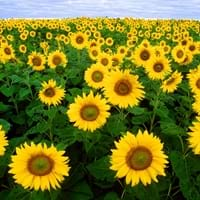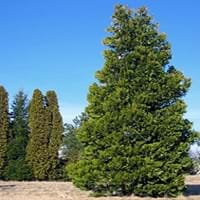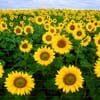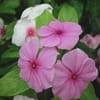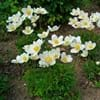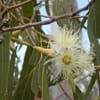Life Span
Annual
Annual and Perennial
Type
Flowering Plants
Tree
Origin
North America
Western United States, California, Mexico
Types
Helianthus annuus, Heliantheae,
Not Available
Number of Varieties
Not Available
Habitat
Dry areas, Open areas, Prairies
low mountains, Mountain tops, Subtropical climates, Temperate Regions
USDA Hardiness Zone
3-10
5-8
Sunset Zone
A1, A2, A3, H1, H2, 1a, 1b, 2a, 2b, 3a, 3b, 4, 5, 6, 7, 8, 9, 10, 11, 12, 13, 14, 15, 16, 17, 18, 19, 20, 21, 22, 23, 24
1a, 1b, 2a, 2b, 3a, 3b, 4, 5, 6, 7, 8, 9, 10, 11, 12, 14, 15, 16, 17, 18, 19, 20, 21, 22, 23, 24
Habit
Upright/Erect
Upright/Erect
Flower Color
Brown, Yellow
Non Flowering Plant
Flower Color Modifier
Bicolor
Bicolor
Fruit Color
Black, Chocolate, Ivory
Sandy Brown
Leaf Color in Spring
Dark Green, Green
Green
Leaf Color in Summer
Green
Green
Leaf Color in Fall
Green
Green
Leaf Color in Winter
Not Available
Green
Plant Season
Summer
Spring, Summer, Fall, Winter
Sunlight
Bright direct sunlight
Full Sun, Partial Sun
Growth Rate
Very Fast
Slow
Type of Soil
Dry, Light, Well drained
Loam, Sand
The pH of Soil
Acidic, Alkaline
Acidic, Neutral
Soil Drainage
Well drained
Well drained
Bloom Time
Early Fall, Early Summer, Fall, Late Spring, Late Summer, Summer
Not Available
Tolerances
Not Available
Drought
Where to Plant?
Container, Ground, Pot
Ground
How to Plant?
Seedlings
Stem Planting
Plant Maintenance
Medium
Medium
Watering Requirements
Keep the ground moist but not water-logged, Requires regular watering, Requires watering in the growing season
Needs less watering, Water occasionally
In Summer
Lots of watering
Lots of watering
In Spring
Moderate
Moderate
In Winter
Average Water
Average Water
Soil pH
Acidic, Alkaline
Acidic, Neutral
Soil Type
Dry, Light, Well drained
Loam, Sand
Soil Drainage Capacity
Well drained
Well drained
Sun Exposure
Bright direct sunlight
Full Sun, Partial Sun
Pruning
Prune ocassionally, Requires little pruning
Prune if you want to improve plant shape, Remove damaged leaves, Remove dead branches, Remove dead leaves
Fertilizers
All-Purpose Liquid Fertilizer
No fertilizers needed
Pests and Diseases
Alternaria leaf blight, Apical chlorosis, Bacteria wilt, Bacterial leaf spot, Botrytis head rot, Charcoal rot, Crown gall, Downy mildew, Erwinia stalk rot, Fusarium stalk rot, Fusarium wilt, head rot, Phialophora yellows, Stem spot
Insects
Plant Tolerance
Drought
Drought
Flower Petal Number
Single
Not Available
Fragrant Bark/Stem
No
Yes
Foliage Texture
Coarse
Medium
Foliage Sheen
Matte
Matte
Attracts
Birds, Butterflies
Birds
Allergy
Runny nose, Red eyes, Watery eyes, Sore eyes, Itchy eyes
no allergic reactions
Aesthetic Uses
Beautification, Bouquets, Showy Purposes, Used for decorating walls, fences, gates, hedges, etc.
Showy Purposes
Beauty Benefits
Not Available
Not Available
Environmental Uses
Air purification
Air purification
Medicinal Uses
Pulmonary afflictions
Stomach pain
Part of Plant Used
Flowers, Seeds, Stem
Bark, Leaves
Other Uses
As Fertilizers, Economic Purpose, Oil is used in perfume, soaps, creams, etc., Showy Purposes, Used As Food, Used as Ornamental plant, Used for producing cooking oil
Making Perfumes, Used in pencil industry
Used As Indoor Plant
Yes
No
Used As Outdoor Plant
Yes
Yes
Garden Design
Bedding Plant, Bonsai, Container, Edging, Edible, Feature Plant, Houseplant, Vegetable
Screening / Wind Break, Shade Trees, Street Trees
Botanical Name
Helianths Annuus
CALOCEDRUS decurrens
Common Name
Sunflower
Incense Cedar
In Hindi
Sūrajamukhī
Incense Cedar
In German
Sonnenblume
Zeder
In French
Tournesol
Encens Cedar
In Spanish
Girasol
cedro de incienso
In Greek
ηλιοτρόπιο
θυμίαμα Κέδρος
In Portuguese
Girassol
cedro de incenso
In Polish
słonecznik
kadzidło Cedar
In Latin
Helianthus
incensum Cedar
Phylum
Magnoliophyta
Tracheophyta
Class
Magnoliopsida
Pinopsida
Family
Asteraceae
Cupressaceae
Genus
Heilanthus
Calocedrus
Clade
Not Available
Not Available
Tribe
Heliantheae
Not Available
Subfamily
Helianthodeae
Not Available
Number of Species
Not Available
Importance of Sunflower and Incense Cedar
Want to have the most appropriate plant for your garden? You might want to know the importance of Sunflower and Incense Cedar. Basically, these two plants vary in many aspects. Compare Sunflower and Incense Cedar as they differ in many characteristics such as their life, care, benefits, facts, etc. Every gardener must at least have the slightest clue about the plants he wants to plant in his garden. Compare their benefits, which differ in many ways like facts and uses. The medicinal use of Sunflower is Pulmonary afflictions whereas of Incense Cedar is Stomach pain. Sunflower has beauty benefits as follows: Not Available while Incense Cedar has beauty benefits as follows: Not Available.
Compare Facts of Sunflower vs Incense Cedar
How to choose the best garden plant for your garden depending upon its facts? Here garden plant comparison will help you to solve this query. Compare the facts of Sunflower vs Incense Cedar and know which one to choose. As garden plants have benefits and other uses, allergy is also a major drawback of plants for some people. Allergic reactions of Sunflower are Runny nose, Red eyes, Watery eyes, Sore eyes and Itchy eyes whereas of Incense Cedar have no allergic reactions respectively. Having a fruit bearing plant in your garden can be a plus point of your garden. Sunflower has no showy fruits and Incense Cedar has no showy fruits. Also Sunflower is flowering and Incense Cedar is not flowering . You can compare Sunflower and Incense Cedar facts and facts of other plants too.
